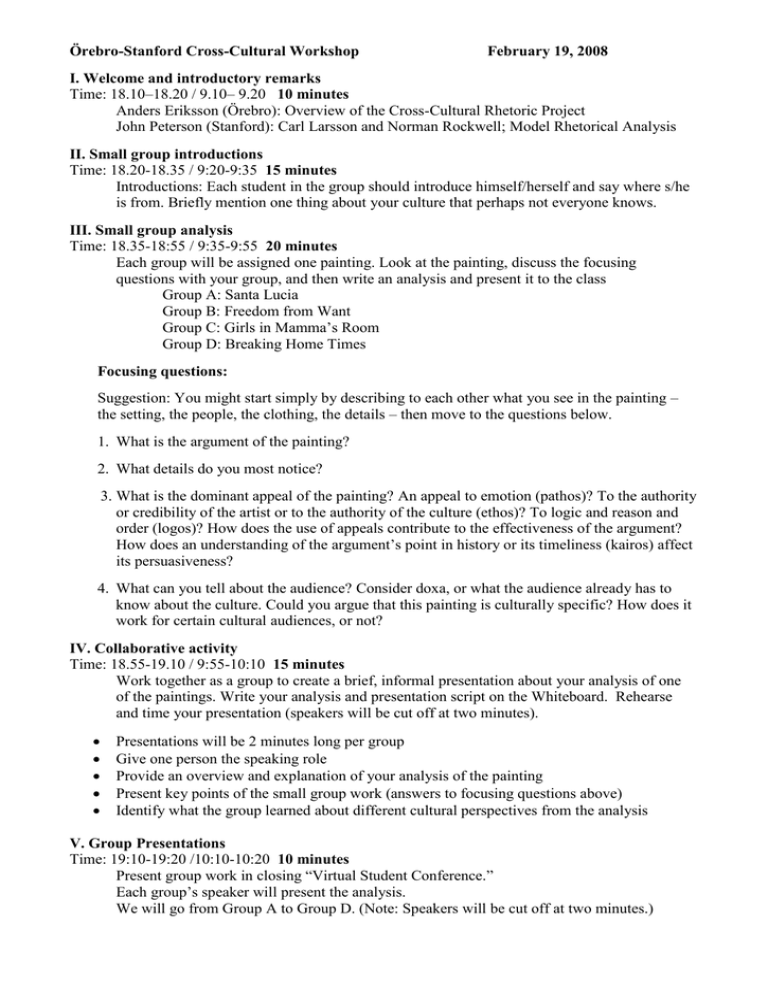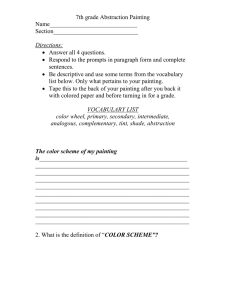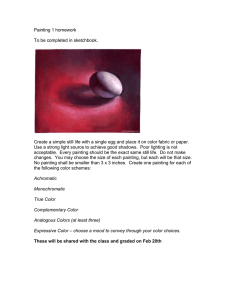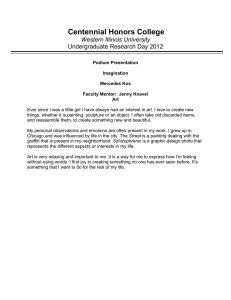02.19.08.LessonPlan
advertisement

Örebro-Stanford Cross-Cultural Workshop February 19, 2008 I. Welcome and introductory remarks Time: 18.10–18.20 / 9.10– 9.20 10 minutes Anders Eriksson (Örebro): Overview of the Cross-Cultural Rhetoric Project John Peterson (Stanford): Carl Larsson and Norman Rockwell; Model Rhetorical Analysis II. Small group introductions Time: 18.20-18.35 / 9:20-9:35 15 minutes Introductions: Each student in the group should introduce himself/herself and say where s/he is from. Briefly mention one thing about your culture that perhaps not everyone knows. III. Small group analysis Time: 18.35-18:55 / 9:35-9:55 20 minutes Each group will be assigned one painting. Look at the painting, discuss the focusing questions with your group, and then write an analysis and present it to the class Group A: Santa Lucia Group B: Freedom from Want Group C: Girls in Mamma’s Room Group D: Breaking Home Times Focusing questions: Suggestion: You might start simply by describing to each other what you see in the painting – the setting, the people, the clothing, the details – then move to the questions below. 1. What is the argument of the painting? 2. What details do you most notice? 3. What is the dominant appeal of the painting? An appeal to emotion (pathos)? To the authority or credibility of the artist or to the authority of the culture (ethos)? To logic and reason and order (logos)? How does the use of appeals contribute to the effectiveness of the argument? How does an understanding of the argument’s point in history or its timeliness (kairos) affect its persuasiveness? 4. What can you tell about the audience? Consider doxa, or what the audience already has to know about the culture. Could you argue that this painting is culturally specific? How does it work for certain cultural audiences, or not? IV. Collaborative activity Time: 18.55-19.10 / 9:55-10:10 15 minutes Work together as a group to create a brief, informal presentation about your analysis of one of the paintings. Write your analysis and presentation script on the Whiteboard. Rehearse and time your presentation (speakers will be cut off at two minutes). Presentations will be 2 minutes long per group Give one person the speaking role Provide an overview and explanation of your analysis of the painting Present key points of the small group work (answers to focusing questions above) Identify what the group learned about different cultural perspectives from the analysis V. Group Presentations Time: 19:10-19:20 /10:10-10:20 10 minutes Present group work in closing “Virtual Student Conference.” Each group’s speaker will present the analysis. We will go from Group A to Group D. (Note: Speakers will be cut off at two minutes.) Second Page – do not distribute to students but use in the classroom debrief after the video conference VI. Debrief at Individual Universities What differences did you experience in the way various members of your groups interpreted the paintings? How much were those differences informed by cultural differences? Has your own understanding of different cultural perspectives changed at all? In what ways? What did you learn most about cross-cultural rhetoric from this activity? In what was did technology inhibit or work best for cross-cultural communication? What did you enjoy most about this exchange? What surprised you most? What would you change for next time?




